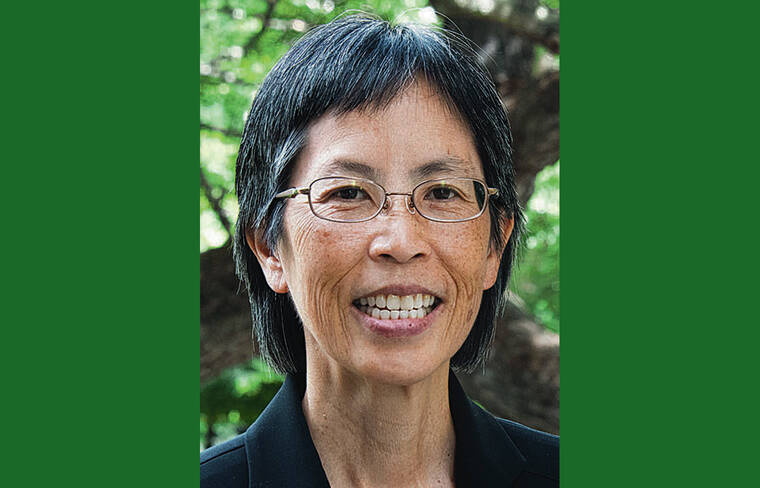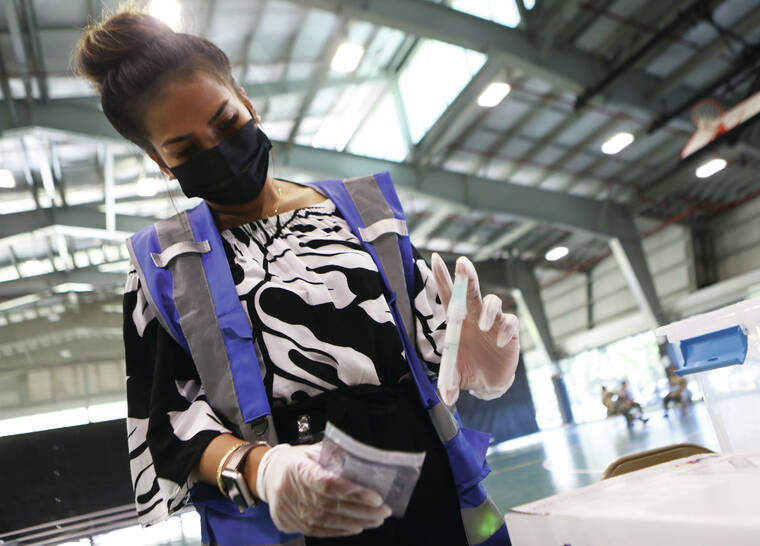Char: Number of state COVID cases ‘very concerning’
The state health director said she thinks “it’s a bit early” to say Hawaii’s surge of COVID-19 cases fueled by the omicron variant has plateaued.
Dr. Elizabeth Char was responding to a question about a statement made Monday by Lt. Gov. Josh Green, a Big Island emergency room physician and likely candidate for governor this year. Green said omicron data from elsewhere indicates Hawaii’s case rates are starting to plateau and will soon start to decline.
“If we look at the trend over the past week, it is still increasing,” Char said in an online interview Friday with the Honolulu Star-Advertiser. “… If you look at the average number of new cases per day, that’s still trending up. We are just shy of 4,600 new cases every single day in Hawaii.”
The state hasn’t reported test positivity rates since Saturday after the state Department of Health said it would temporarily “suspend the processing of negative cases” in its COVID data bank, which Char said was done because inputting that information was slowing down the reporting of new cases. Char said the data is still being kept and the reporting of test positivity rates would resume “in a week or so.”
The state reported 4,473 cases and Hawaii County recorded 507 new cases on Friday, with the seven-day average of daily new cases on the Big Island at 485 and rising, according to the DOH’s COVID-19 data dashboard.
“We’re seeing tremendous case counts throughout the state, including the neighbor islands. So that’s very concerning,” Char said. “And the good thing is that the percentage of people that end up in the hospital with omicron is a lot less than it was for delta. That being said, just the sheer numbers — the hospitals are very, very full.”
Char called hospitalization numbers “very concerning” but said she doesn’t “think there’s cause for panic.”
“I know there was a lot a chatter about ‘omicron’s real mild, you don’t have to worry about it,’” she said. “But … I think the hospitalized population (with COVID-19) is up to about 400, 420, in that ballpark. When we were at the peak of delta, we were at about 436, if I remember correctly. And so, we’re absolutely seeing a number of people in the hospital. The good news is, we’re not seeing the same percentage in the (intensive care unit). I think, today, we’re seeing about 50 in the ICU.”
Last week, 350 health care personnel — mostly nurses but some respiratory therapists — arrived for temporary assignment in Hawaii, and another 250 are slated to arrive this week. The price tag of $90 million is being paid for by the Federal Emergency Management Agency.
“All of the hospitals have said that that’s been really, really beneficial. They were at, you know, crisis staffing and real critical staffing. And right now, they’re stretched …,” Char said.
Char said the high number of cases in the community means more COVID cases are being reported by schools.
“I think we have to remember that the schools are just a reflection of the community,” she said.
“… That said, I think there’s a lot of importance in keeping kids in school. There are great benefits in that. But we have to weigh that with the downside of ‘are we exposing kids unnecessarily?’ … The Department of Health school health advisory teams have said that we’re OK for now, let’s keep the kids in school. But that’s a decision for every parent and every student to make.”
Email John Burnett at jburnett@hawaiitribune-herald.com.



